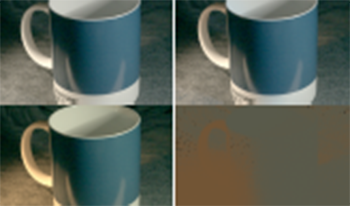
The aim of colour constancy is to discount the effect of the scene illumination from the image colours and restore the colours of the objects as captured under a ‘white’ illuminant. For the majority of colour constancy methods, the first step is to estimate the scene illuminant colour. Generally, it is assumed that the illumination is uniform in the scene. However, real world scenes have multiple illuminants, like sunlight and spot lights all together in one scene. We present in this paper a simple yet very effective framework using a deep CNN-based method to estimate and use multiple illuminants for colour constancy. Our approach works well in both the multi and single illuminant cases. The output of the CNN method is a region-wise estimate map of the scene which is smoothed and divided out from the image to perform colour constancy. The method that we propose outperforms other recent and state of the art methods and has promising visual results.

After skin cancer, prostate cancer is the most common cancer in American men. This paper introduces a new database which consists of a large sample size of patients gathered using multispectral photoacoustic imaging. As an alternate to the standard two class labeling (malignant, normal), our voxel based ground truth diagnosis consists of three classes (malignant, benign, normal). We explore deep neural nets, experiment with three popular activation functions, and perform different sub–feature group analysis. Our initial results serve as a benchmark on this database. Greedy based feature selection recognizes and eliminates noisy features. Ablation feature ranking at the feature and group level can simplify clinician effort and results are contrasted with medical literature. Our database is made freely available to the scientific community.